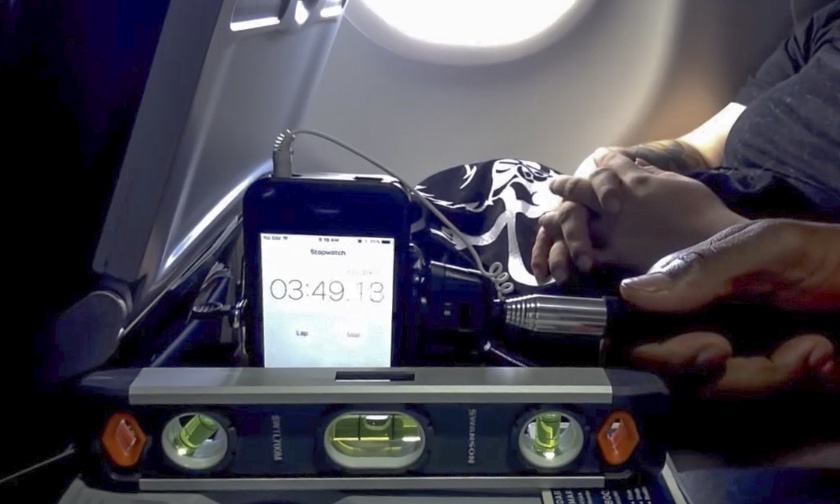
It's hard to believe some of the silly demonstrations thought up to prove the Earth is flat. One recent demonstration that has been filmed by a number of guys is bringing a spirit level (bubble level) on a plane and looking for the device to show the nose of the plane pointing down. Roll your eyes all you want, but this is a real test that some people take seriously. Below I will describe exactly why this test won't work.
First and foremost, the spirit level demonstration fails because it makes a few false assumptions. It also disregards math. Both issues will be covered in this article.
The assumptions made are usually that the plane should tilted with the tail being higher than the nose. This assumption is based on the premise that since the Earth is a sphere, the plane will fly into outer space if it does not have a downward facing path. Basically, a flat trajectory they believe will lead the plane away from the Earth, like the following example:
Therefore, they believe that the plane must point the nose down some to account for the shape of the earth. However, this notion completely ignores gravity. Gravity would have a downward force working on the plane and would keep the plane rather "parallel" to the Earth's surface. This is because gravity would have a uniform exertion on the plane just like swinging a bucket of water on a rope.
The other assumption that the spirit level demonstration makes is that the seat of the plane is level to the earth... or any other flat part of the plane. Additionally, the angle that the plane must fly at in order to create lift might also not be level to the ground. A simple observation will show that most planes sit relatively level on the runway but the wings are angles downward.
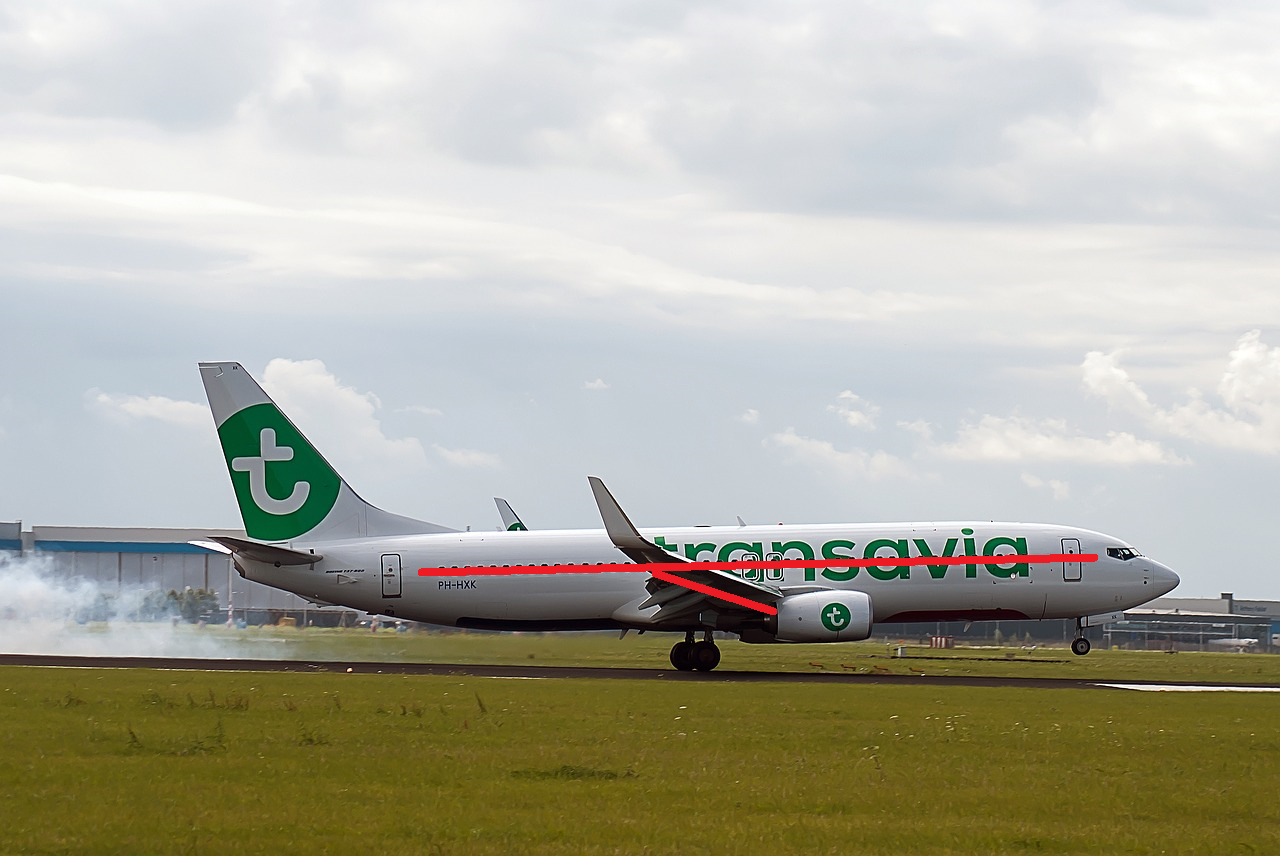
Most commercial airplanes actually cruise with a pitch of 1-4 degrees (nose-up). This is because a heavy and loaded plane needs to create lift and more lift is created by increasing the pitch. This is fairly obvious by how a plane takes off. So a small pitch of just 2 degrees would be enough to keep the plane from losing altitude because of gravity.
This is also why the plane fuselage is not aligned parallel with the wings. If it was then the plane would be leaning drastically downward when descending for the landing. With an upward pitch the passengers can sit at a comfortable level while descending, even if that means at cruising speed the plane is slightly pitched up. Leaning back a few degrees is always better than leaning forward because we have seat-backs.
In summation, there is more to the plane's path than just direction. Engineers account for passenger comfort, drag, lift, and basic physics of gravity.
The mathematical flaw of bringing a spirit level on a plane is that the curvature of the Earth is not great enough that a spirit level would give a helpful reading. Even if planes needed to tilt the nose down to account for the curve (which they don't) the tilt would only be noticeable with a very precise digital level.
For example, on a 1000 mile plane ride the Earth's surface would bend around a radius of only 5.5 degrees. But since the plane has 1000 miles to cover it would only have to tilt it's nose a fraction of that. It would but just .00559 degrees. No person could possibly see that on a simple bubble level and a digital level would be hundreds of dollars for that level of precision. But alas, it would be a waste of money since a plane does not need to pitch the nose of the plane downward.
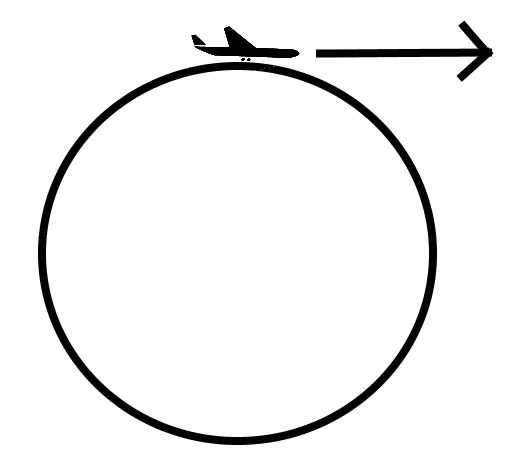
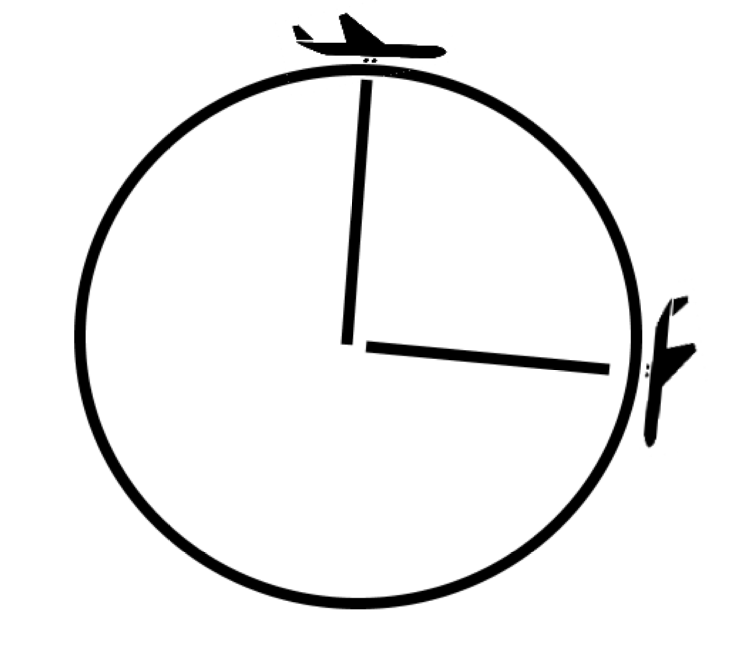
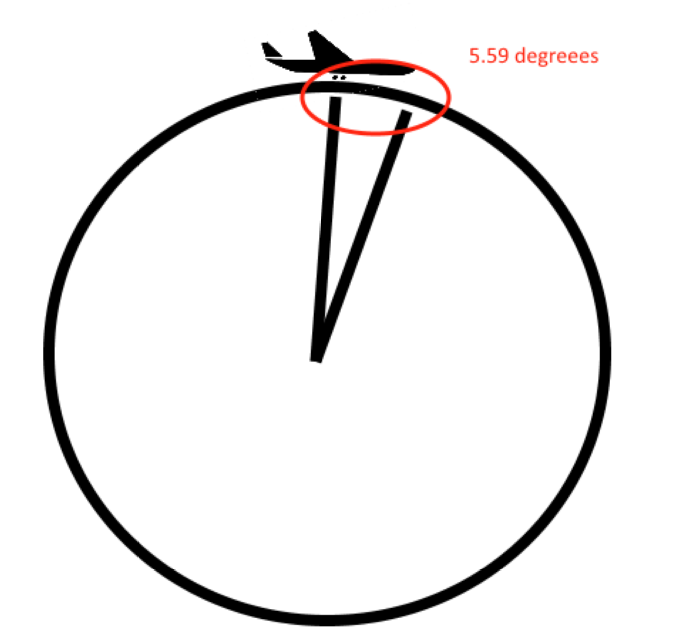
Comments